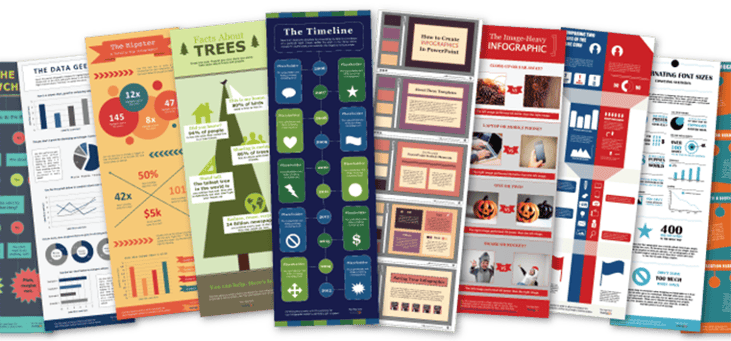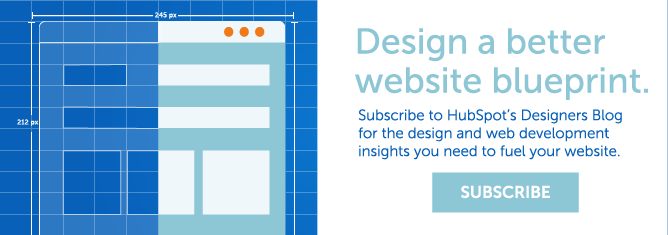
This post originally appeared on HubSpot's Marketing Blog.
Wouldn't it be great if creating infographics was just as simple as writing regular ole text-based blog posts? Unfortunately, the reality is that making visual content like this usually takes a lot more time, effort, and let's face it -- skill -- than the written word. Usually.
But considering the popularity and effectiveness of visual content in marketing today, you can't just afford to throw in the towel. That's why we decided to take all the pain and suffering out of infographic creation. Seriously -- don't throw in the towel just yet. You, too, can create professional-looking, high-quality infographics ... quickly! And I'm going to prove it. First things first ...
Download our 10 free infographic templates -- all easily customizable in PowerPoint -- right here.
Then all you have to do is provide the content to use inside them. Easy as that! In fact, I'm going to show you just how easy it is by taking one of our 10 infographic templates in PowerPoint (pictured above) and creating my own customized infographic with it. Then I'll explain exactly what I did so you get a sense of how easy it really is. Let's begin!
How to Make an Infographic in PowerPoint in Under an Hour
Step 1: Collect Your Data/Content, and Choose Your Desired Template
Your first step is to collect the data/content you'll be using to populate your infographic, and choose an infographic template appropriate for representing that data. The important thing is to choose a template that specifically works for the type of data set/content you want to present. As you saw pictured above, we have 10 infographic templates in PowerPoint to choose from. Some of your template options here include a timeline, flowchart, comparison, how-to, data-heavy, and image-heavy infographic.
You can either collect third-party data, or use your own original data. If you use third-party data, just be sure you properly cite your sources -- just like in any other good piece of content.
To keep your infographic uncluttered by a ton of different source URLs, a great way to cite your sources is to include a simple URL at the bottom of your infographic that links to a page on your site listing the individual stats used in your infographic, and their sources -- such as the blog post you're using to publish your infographic. This way, your infographic looks clean and professional, yet people will still be able to access the sources no matter where the infographic gets shared or embedded. It may also even drive visitors back to your site!
For the sake of time (remember, our mission is to create an infographic in under an hour), for my infographic, I'm going to choose a compilation of social media stats, charts, and graphs we've already collected from our 2015 Social Media Benchmarks Report, and I'm going to pick The Data Geek infographic from our collection of infographic templates, which is appropriate for my data set since it conveys statistics using charts and graphs. This template is pictured below:
Step 2: Customize Your Infographic
Obviously, this is the most time-consuming part -- but it's also the most fun! Simply come up with a catchy title, plug in your data/content, and adjust your font sizes and formatting. Feel free to switch up the graphics, too, so they're relevant to the data you're citing. You can use the simple graphs and charts provided by PowerPoint to create things like the bar graph or the pie chart. (Note: Our free infographic templates download also provides a cheat sheet for using PowerPoint's various features and tools in case you need to brush up on your PowerPoint tips.)
To customize the look of the infographic even more, I also added a variety of colors to the mix including one main color -- orange -- to give the infographic more of a HubSpotty, branded feel. I also changed up the font style to match the rest of HubSpot's content.
Finally, I included a link to my source, which can be found here, as well as the HubSpot logo so people know who created the infographic if it gets shared in social media or embedded on other websites -- which is definitely something you want since one of the main benefits of infographics is their shareability.
That's it! This whole thing took me under an hour to put together -- much shorter than it would've taken me if I'd started from scratch (not to mention more professional looking ... and cheaper than hiring a designer). Here it is!

Share This Image on Your Site
Step 3: Add an Embed Code and 'Pin It' Button, and Publish It!
The only thing left to do is to publish and promote your awesome new infographic. As I mentioned earlier, we recommend using your blog to publish it (including your list of sources), including a 'Pin It' button for visitors to easily share your infographic on Pinterest, and adding an embed code for visitors to share it on their own websites and blogs, as we did above. Check out this blog post to learn how to easily create an infographic embed code.
Ready to start creating your own infographics like a professional? Download our 10 free infographic templates here, and start customizing!
Editor's Note: This post was originally published in August 2013 and has been updated for accuracy and comprehensiveness.








